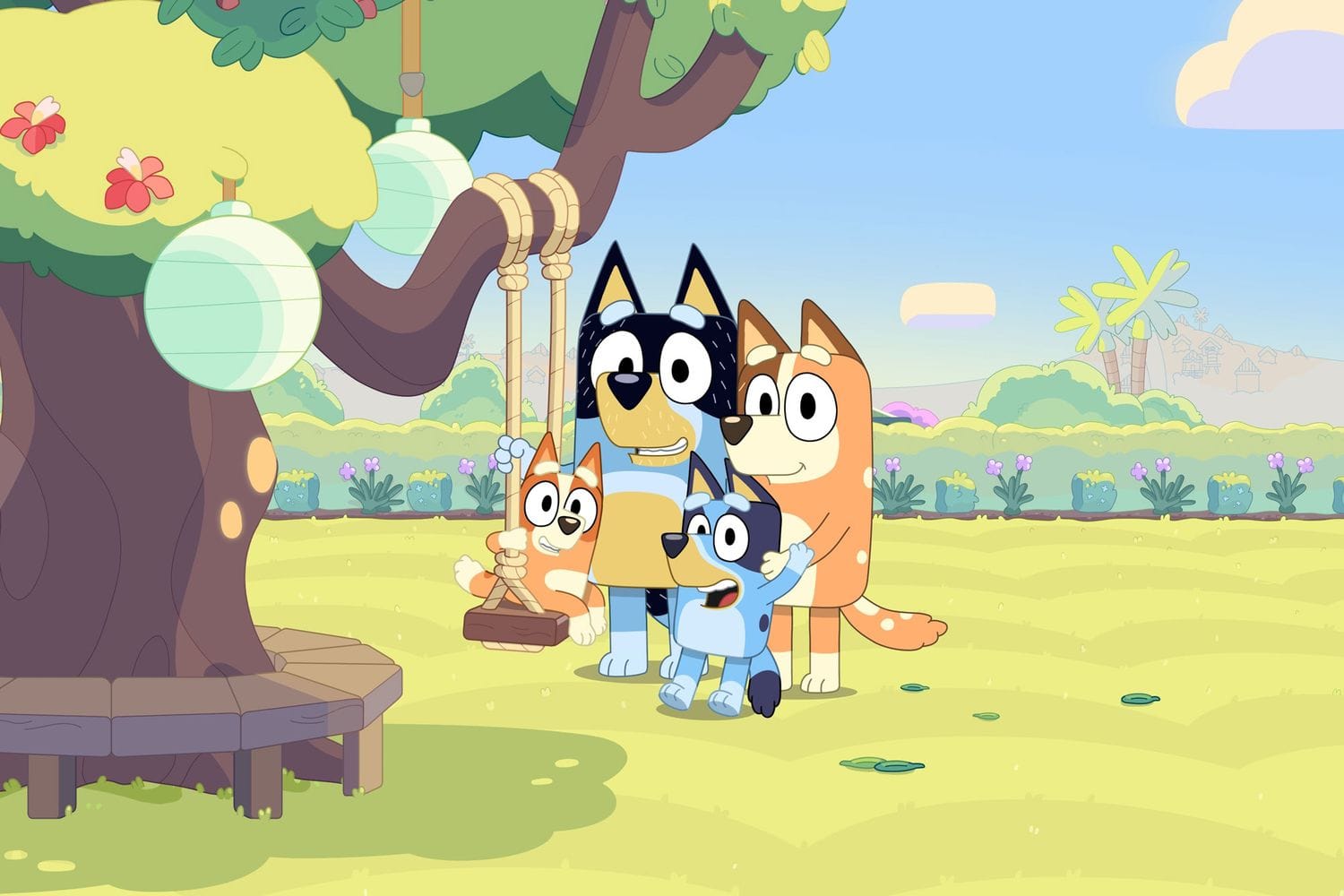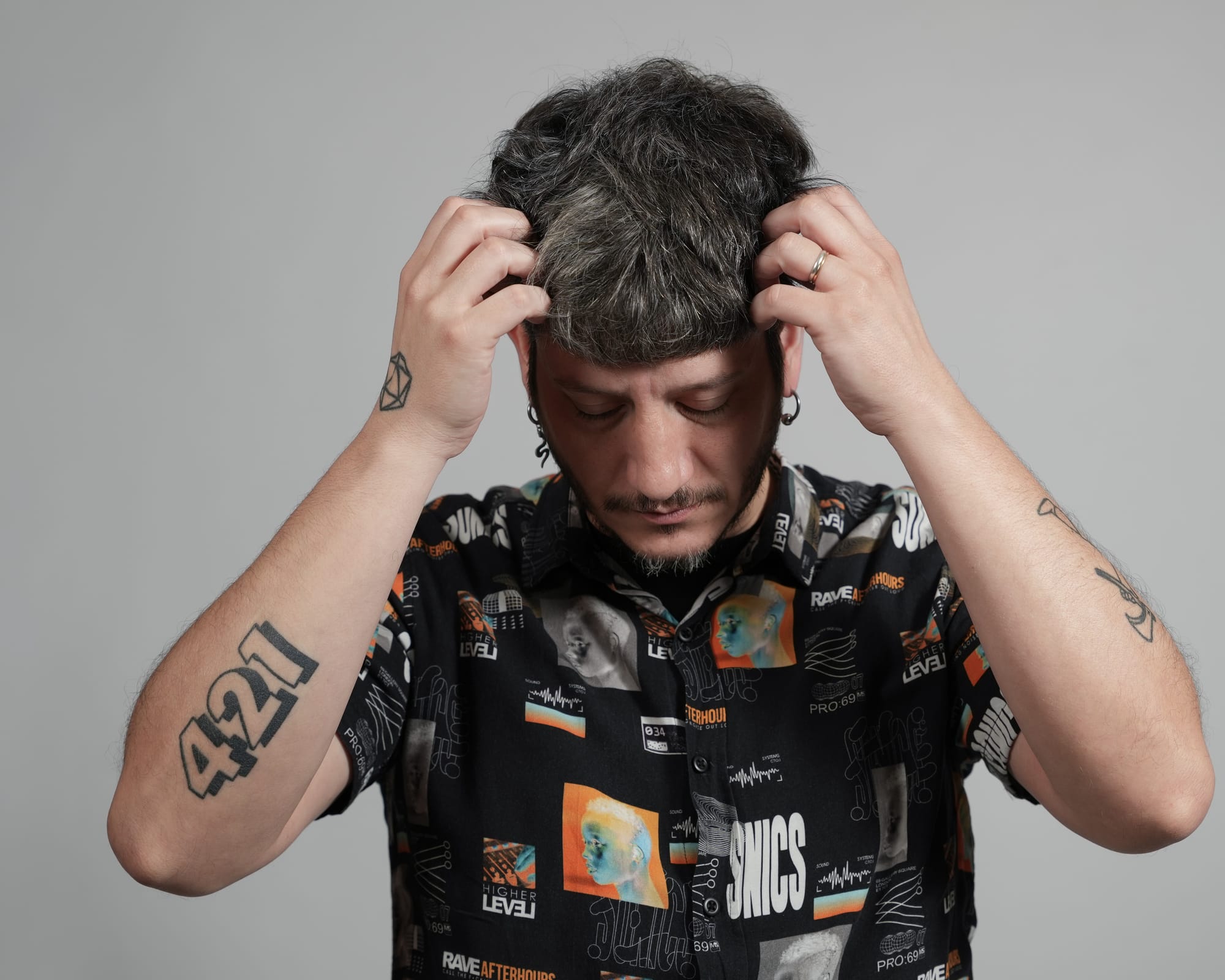Around 700 dogs live in the 47 square kilometers of the Chernobyl exclusion zone. Apparently some dogs turned blue in recent weeks because they had contact with chemicals or pigments. Anyway, I'd been meaning to write about Bluey, the Australian animated series about a blue heeler pup and her family, and this bizarre news gave me the perfect hook. The first time my daughter asked me to see Bluey, I assumed she meant Blue's Clues and I put on an episode of the detective dog. I dismissed her precision, and she claimed with complete clarity: "That's Blue; it's not Bluey, daddy". So I watched with her what she wanted to watch.
I liked what I saw right away; it entertained me, I thought it was appropriate and really nice. Different from most childhood animations that are global mainstream hits, where the general formula is of children's songs shouted with squeaky voices, garish contrasts and a frenetic barrage of rapid cuts. The norm is sensory junk for preschoolers, in some way "cartelized" because many of these programs come from a few companies, the largest being Moonbug Entertainment, home of CoComelon, Blippi and Little Angel. On the contrary, what I found in Bluey was an animated series that didn't treat my daughter like an idiot.
I didn't know it then but that year –2023– Bluey would be the second most watched streaming series in the United States (only behind Suits); and the next, in 2024, the first. I also didn't know that the IP was worth more than $2 billion or that it represented a third of total series and TV views on Disney+. I knew nothing about its origins in Australian public television nor about the vision of a single creator, the Australian Joe Brumm, who's often exhausted and imperfect at the parenting job, yet intentional about it.
What Bluey Is About
Bluey focuses on the Heeler family, made up of the protagonist Bluey, her little sister Bingo, her father Bandit and her mother Chilli. The Heelers are a typical nuclear family rather than a traditional one. To begin with, they are not human characters but canines based on blue heeler dogs, bred in Australia since the 19th century and trained to herd livestock, which at the time were exported to agricultural Europe. In fact, they are not recommended as pets: they need an inordinate amount of exercise and can be quite aggressive –yes, a bit like children–.
For now, let's say the Heelers' fun, everyday adventures drive the show. Almost all episodes, averaging seven minutes, start with a situation that sparks some kind of play between the puppies and/or their parents. The game is the episode's driving force and that's why Bluey feels so dynamic, entertaining, even a bit trippy –yet grounded and practical.
Beneath the surface, Brumm uses these adventures to honestly and "realistically" address difficult and more adult topics, such as infertility, anxiety, death, a hangover or even the need for a break from the demands of parenting. For kids, Bluey seems to be a show for children. For grown-ups, Bluey seems to be a show for parents.
Where Bluey Came From
Bluey debuted in 2018 and has released 195 episodes, with an average on IMDB of 9.3/10 among 42 thousand ratings. On its YouTube channel, which is over 12 million subscribers, there are nearly 1200 videos, including shorts, compilations and specials. Bluey, the other characters and the show as a whole were created by Brumm, who had begun his career animating for British TV on shows such as Charlie & Lola or Peppa Pig, often placed in a (bloodless) head-to-head with Bluey.
Brumm came up with the idea by reflecting and sketching from his experience as a father of two girls. In 2016 he presented a one-minute pilot to Ludo Studio, which took the proposal and began looking for someone who could greenlight it for broadcast. ABC, Australian public television, trusted the project and put up a small amount of funding to make a pilot episode. They liked it and continued looking for funds. The BBC came in with $5 million to fund a 52-episode season (7 minutes each). Bluey was an immediate success and, shortly after, it was already broadcast on channels and platforms in 60 countries.
The fact is that the British BBC Studios were in charge of global distribution, licensing and merchandising rights. Today, ABC collects only a tiny share of the revenue from one of Australia's biggest cultural exports. In scale, Bluey is the children's animation equivalent of Mad Max in film or AC/DC in music.

A Good Show vs. A Shitty Show
In August 2023, Joe Brumm talked about where the ideas for Bluey come from in the podcast How Other Dads Dad, by Hamish Blake: "The games of Bluey evolved at 5 in the morning, while I was taking care of the kids. And 'evolve' is the right word because some you play once –they're dull and they fade. But there are others where it's like 'Can we play that game again?'; 'Yes, come on, and let's add this'; and two months later that game already has a name".
Those pastimes that evolved with his girls make it to the screen: some are games typical of an artist's mind, which extract new beauty from everyday life; and others are typical of the parenting tradition: the robot dad, the patient mom, the family of dancers. Just as Dora the Explorer and The Magic School Bus revolve around a new adventure each episode –and The Simpsons face a weekly disruption–, Bluey makes games the serialized spine.
By contrast, here's how Moonbug makes CoComelon, according to its research director: "Once a month, they bring kids to a studio in London and they show them a handful of episodes to find out which parts hook them and which ones they disconnect from. The team deploys a tool with a whimsical name: the Distractatron. A small screen located near the larger one, which plays banal scenes from the real world on a loop (someone pouring a cup of coffee or cutting their hair), lasting about 20 seconds. Each time a child looks the Distractatron, it is noted. We can see what they are looking at and the exact moment they were distracted.
With those notes, the creative team put together episodes that are little more than strings of segments –unbearable junk–designed purely to hijack our children's attention, which –even after short exposure– clearly erode willpower and work via dopamine hits. It's the toddler equivalent of adult doomscrolling.
What I Like Most About Bluey
There are many excellent episodes among the almost 200 of Bluey. There's broad consensus that the one about the wedding ("The Sign", S3E49), the one about the space adventure of Bingo and Floppy ("Sleepytime", S2E26), the one about camping (S1E43), the one about Bluey and Judo learning to walk ("Baby Race", T2E50) and cricket (T3E47) put together a top 5. The one on the bike from the first season (E11) is also very good and there's even one with an Argentine Doberman who picks strawberries ("Explorers", T3E15). And, of course, there is a brand new Halloween special.
And there is the one with the whales ("Whale Watching", T3E22). Bandit and Chilli are hungover post-New Year's and the kids want to play. The couple can't take it anymore and Bandit ends up playing the whaling-boat game, with the girls jumping on him. A hyper-specific parenting problem: when you're broken from last night and your kids want and need to play, walk and dance. This circles back to Bandit and Chilli being as important as Bluey and Bingo; everyone understands that they need that generational otherness to enjoy the world. Which in the case of parents resonates with other old-school experiences of children's play that they bring to their daughters (playing sick, puppets, dancing, ring-toss-style games), that which is so ritualized in how we seek to entertain our children.
This also comes back to Bluey being a series about childhood and family –and, above all, about the importance of play. That has a risk, which is that whit Bluey kids may believe that we can be available 24/7 to play, which becomes much more difficult to define if you work from home. And Bluey anticipates, acknowledges, and works through that in its episodes. The writing is outstanding and the art is terrific –please read this fantastic note about the worldbuilding of the series–, but Bluey doesn't shy away from what's hard: rejection, grief, pain, illness.
In each episode there is a moment of frustration management and negotiation; and according to an analysis of the first three complete seasons, resilience is the most prevalent theme. Meanwhile, the rest of the mainstream entertainment conglomerate for preschoolers pushes dependency and discourages the ability to juggle multiple "windows" –literally or figuratively: don't think about anything else, don't open another app, don't change videos, don't let go of my hook.
One side-effect of Bluey's scale is structural bloat: more and more micro-decisions get made by data bureaucrats rather than people with a heart, which in the long run settles into a thin layer of gilded minimal results. Given the possibility that something like this happens with Bluey, Joe Brumm stepped back from the series this year and devoted himself to a Heeler family feature film slated for 2027.

